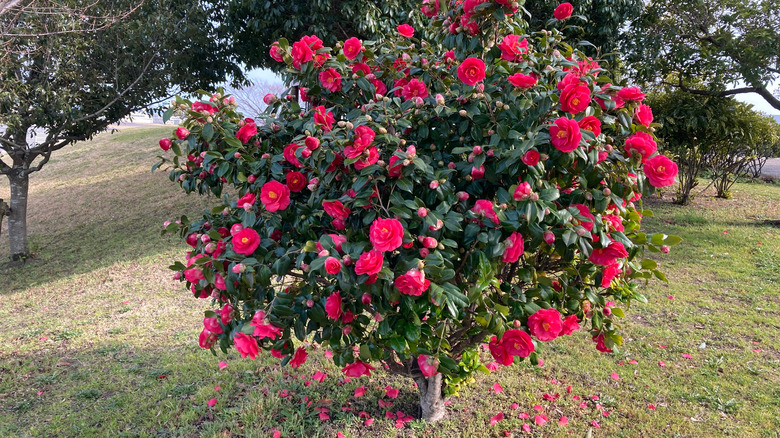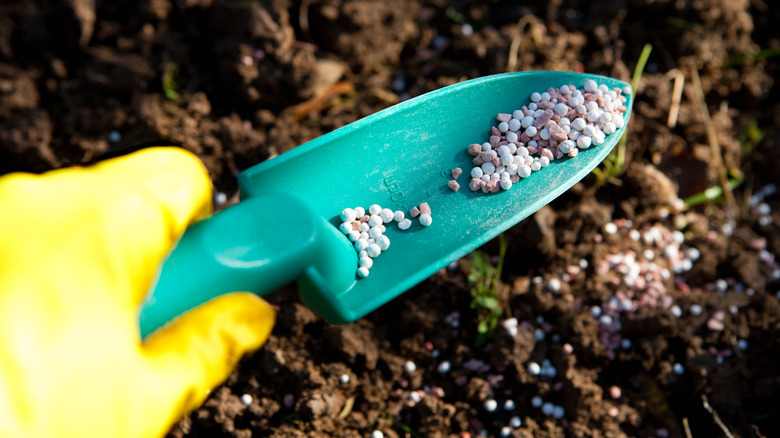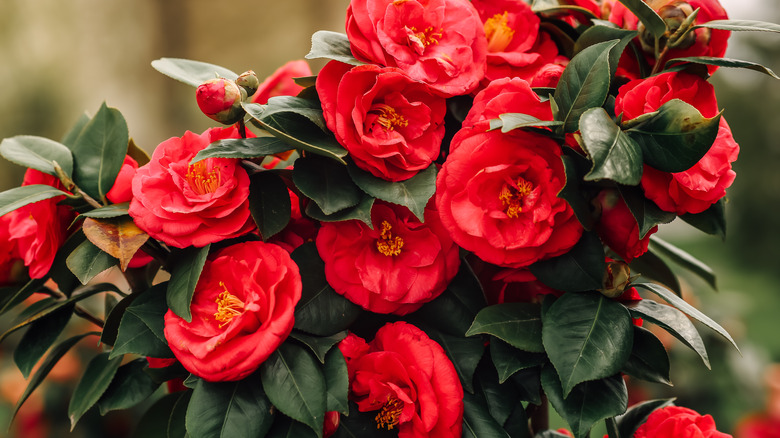Help Your Camellias Produce Gorgeous Blooms With This Simple Gardening Tip
To get those eye-catching camellia blooms popping in your garden, spring fertilization is your go-to move, right after the flowers say their goodbyes. This timely preparation sets the stage for your garden to look pretty for the season, ensuring your camellias shine with color and life. Originating from the lush landscapes of eastern and southern Asia, camellias have found their happy place in USDA zones 7 to 9. Sure, those well-rooted camellias of yours might look fine on their own, but a little bit of TLC with the right fertilizer can take their bloom game from good to breathtaking. And it's not just about the here and now. This care ensures your camellias keep thriving and blooming year after year.
Opting for an acid-forming fertilizer, like the kind you'd use for azaleas, is key. Camellias are pretty resilient, but they do have their preferences. Knowing which fertilizer to grab is half the battle. The other half? Understanding the when and how of fertilizing to cater to your camellias' needs throughout their growth journey. Before you start, check your soil's pH to make sure it's just right for your camellias, aiming for that sweet spot between 6.0 and 6.5.
Fertilizing your camellias: a guide to nurturing beauty
Kicking off your camellias' nutrition plan is more about groundwork than just opening a fertilizer bag. Begin with a little garden maintenance—pluck off any blooms that are past their prime and scoop up the petals that have gathered at the plant's base. This step is crucial for two reasons. Firstly, it prevents your camellias from channeling energy into seed production, allowing them instead to focus on growth and producing vibrant blooms. Secondly, it acts as a guard against camellia blight, a real problem for these beauties, by cutting down on the chance of disease from decaying floral debris.
Choosing the right fertilizer involves a bit of label reading. The numbers on the package, like 4-8-8, 12-4-8, or 10-10-10, tell you the balance of nitrogen, phosphorus, and potassium. If your goal is more about enhancing blooms and your camellias are comfortably established, a lower nitrogen mix, such as 4-8-8, is your best bet. It encourages flowering while providing the necessary nutrients without leading to excessive foliage. However, if your camellias are younger and in a growth phase, opting for a mix with a higher nitrogen content, like 12-4-8 or 10-10-10, will support their development. The timing of fertilization also matters. If you're considering a second application, aim for midsummer. This is particularly helpful if your plants seem a little weary or if the foliage starts to look less vibrant.
Considerations and cautions in camellia fertilization
Caring for your camellias the right way can really make them pop with beauty and energy, but it's all about finding that sweet spot. You don't want to overdo it and end up causing more harm than good. Here's a handy tip to keep in mind: finish up your fertilizing routine a good 60 days before the frost is expected to hit. Fertilizing too close to winter can encourage new growth that's too delicate to handle the cold, putting your camellias' toughness and health on the line. When picking out your fertilizer, pay close attention to the numbers. You might think more nitrogen means greener plants, but too much can actually invite a whole host of insect problems. And a high phosphorus content? That can interfere with your camellias' ability to soak up other essential nutrients.
Also, remember to follow the instructions. Every brand has its own recommendations, and guessing games don't usually end well. Especially be wary of over-fertilizing; it can lead to nutrient burn, which is as bad as it sounds for your plant's health. As for when to fertilize, timing is everything. Early morning or late afternoon are your best bets to avoid the harsh midday sun, which can evaporate the moisture before the nutrients have a chance to work their magic in the soil. Also, keep an eye on the weather forecast. You'll want to avoid fertilizing just before a heavy rain, as it can wash all your good intentions (and nutrients) right out of the soil.


